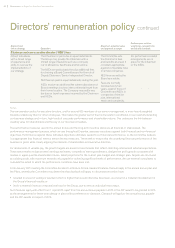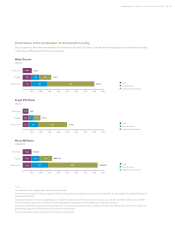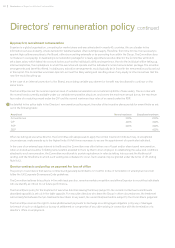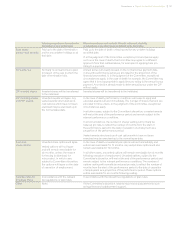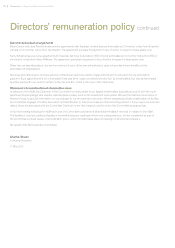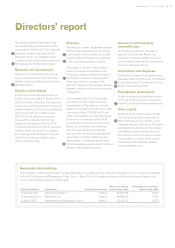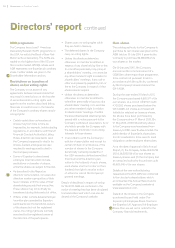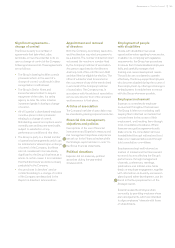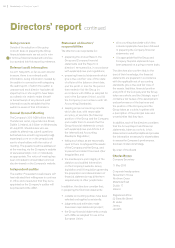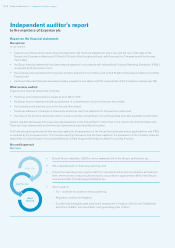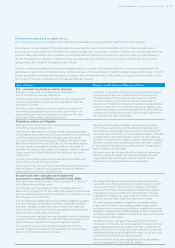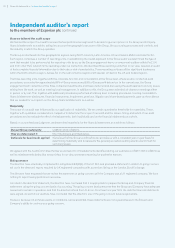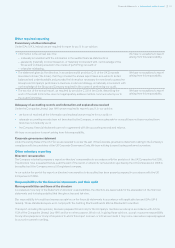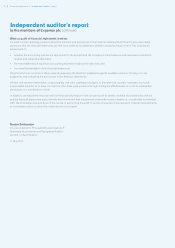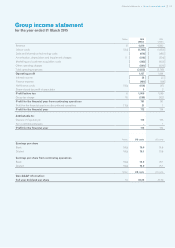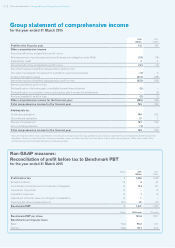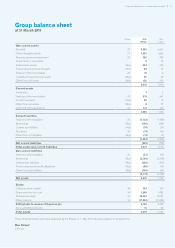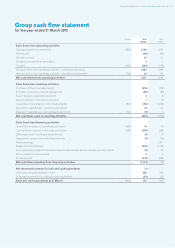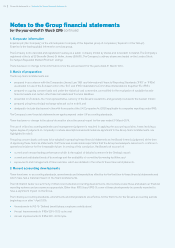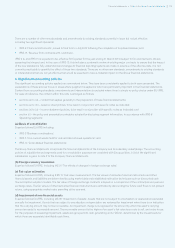Experian 2015 Annual Report Download - page 110
Download and view the complete annual report
Please find page 110 of the 2015 Experian annual report below. You can navigate through the pages in the report by either clicking on the pages listed below, or by using the keyword search tool below to find specific information within the annual report.
The scope of our audit and our areas of focus
We conducted our audit in accordance with International Standards on Auditing (UK and Ireland) (‘ISAs (UK & Ireland)’).
We designed our audit by determining materiality and assessing the risks of material misstatement in the financial statements. In
particular, we looked at where the directors made subjective judgments, for example in respect of significant accounting estimates that
involved making assumptions and considering future events that are inherently uncertain. As in all of our audits, we also addressed
the risk of management override of internal controls, including evaluating whether there was evidence of bias by the directors that
represented a risk of material misstatement due to fraud.
The risks of material misstatement that had the greatest effect on our audit, including the allocation of our resources and effort, are
identified as ‘areas of focus’ in the table below. We have also set out how we tailored our audit to address these specific areas in order to
provide an opinion on the financial statements as a whole. Any comments we make on the results of our procedures should be read in
this context. This is not a complete list of all risks identified by our audit.
Area of focus How our audit addressed the area of focus
Tax – uncertain tax positions and tax planning
Refer also to the Audit Committee report and notes 4, 5
and 16 to the Group financial statements.
The Group operates in a number of territories and recognises tax
based on interpretation of local laws and regulations which are
sometimes uncertain.
The directors are required to exercise significant judgment in
determining the appropriate amount to provide in respect of
potential tax exposures and uncertain tax positions. The most
significant of these relate to Brazil and the UK.
In respect of exposures arising from ongoing enquiries raised
by the tax authorities we considered both the most recent
correspondence with the relevant revenue service and the
advice provided by the Group’s tax advisers. We made an
assessment of whether management has taken an appropriate
position in light of the tax authority’s arguments. Based on the
evidence we obtained, we determined that the position taken by
management and the disclosures in the financial statements of
the uncertainties, were reasonable.
Regulatory matters and litigation
Refer also to the Audit Committee report and notes 5 and 41
to the Group financial statements.
The consumer data industry continues to have increasing regulation
in key markets across the world. The Group operates in an increasingly
scrutinised regulatory environment, including regulation by the
Consumer Financial Protection Bureau (‘CFPB’) in the USA and the
Financial Conduct Authority (‘FCA’) in the UK. The regulatory regime
in these countries increases the risk that violations may result in
penalties. The Group is also subject to increased levels of consumer
claims, especially in Brazil relating to the disclosure and use of
credit scores.
The directors applied judgment when determining whether, and
how much, to provide for these matters.
We focused on this area due to the magnitude of potential exposures,
and the inherent complexity and judgment involved in whether to
make additional provisions and disclosures.
We discussed the status of litigation and regulatory reviews
with in-house legal counsel and the Global Compliance team.
We obtained evidence regarding the decisions and rationale for
provisions held or decisions not to recognise provisions, including
correspondence with external legal counsel. We also obtained
external confirmations from legal counsel on significant litigation.
We also monitored and considered external information sources
to identify potential legal actions and regulatory findings and no
further matters were identified.
We found that in the context of the Group financial statements
taken as a whole the judgments made by management were
reasonable and the disclosures made in respect of these
provisions and contingent liabilities are appropriate.
Goodwill and other intangible asset impairment
assessment in respect of EMEA and Asia Pacific CGUs
Refer also to the Audit Committee report and notes 4, 5, 20 and 21
to the Group financial statements.
The carrying value of goodwill and other intangible assets at 31
March 2015 is US$6,017m. Of this, US$5,529m relates to CGUs where
there is substantial headroom between value-in-use calculations and
the carrying value of net assets.
The estimated recoverable amount of the EMEA (US$300m goodwill
and other intangible assets) and Asia Pacific (US$188m goodwill
and other intangible assets) CGUs shows there is low headroom
and some risk of impairment if growth assumptions and forecasted
improvement in margin are not achieved.
The carrying value of goodwill and other intangible assets is contingent
on future cash flows and there is a risk that, if these cash flows do not
meet the Group’s expectations, the assets might be impaired.
The impairment reviews performed by management contain a
number of significant judgments and estimates including revenue
growth, profit margins and discount rates.
We obtained the Group’s impairment analyses and tested the
reasonableness of key assumptions including long-term growth
rates and short-term forecasted profit margins for the EMEA
and Asia Pacific CGUs. We assessed the assumptions against
management’s record of historical forecasting accuracy and
evaluated the methodology used to allocate central overhead
costs to individual CGUs within the impairment models.
We obtained and evaluated management’s sensitivity analyses
to ascertain the impact of reasonably possible changes and we
performed our own sensitivity calculations to quantify the downside
changes to management’s models required to result in impairment,
focusing in particular on EMEA and Asia Pacific where the headroom
is lower than the other CGUs.
We determined the change in those assumptions that either
individually or collectively would be required for the goodwill and
other intangible assets to be impaired. We then considered the
likelihood of such movements in key assumptions occurring and
determined that these sat outside of the range of what we would
consider to be realistically possible outcomes.
We found that the disclosures highlighted the key sensitivities
used by management in its sensitivity analysis.
109
•
Financial statements Independent auditor’s report


